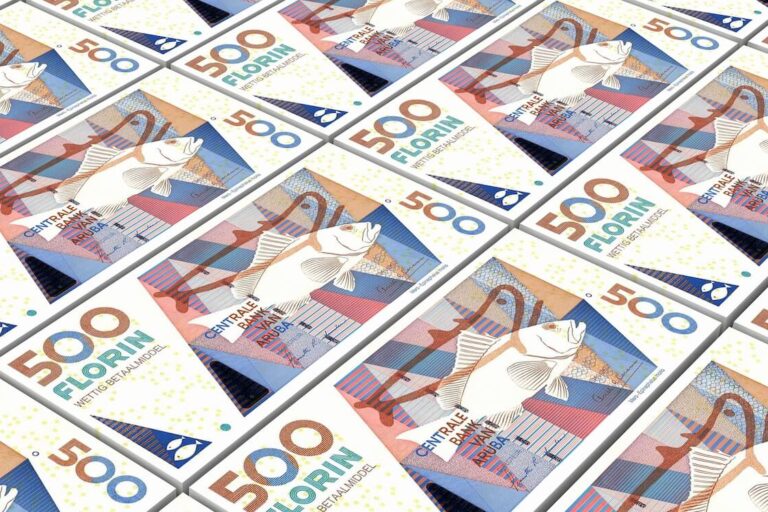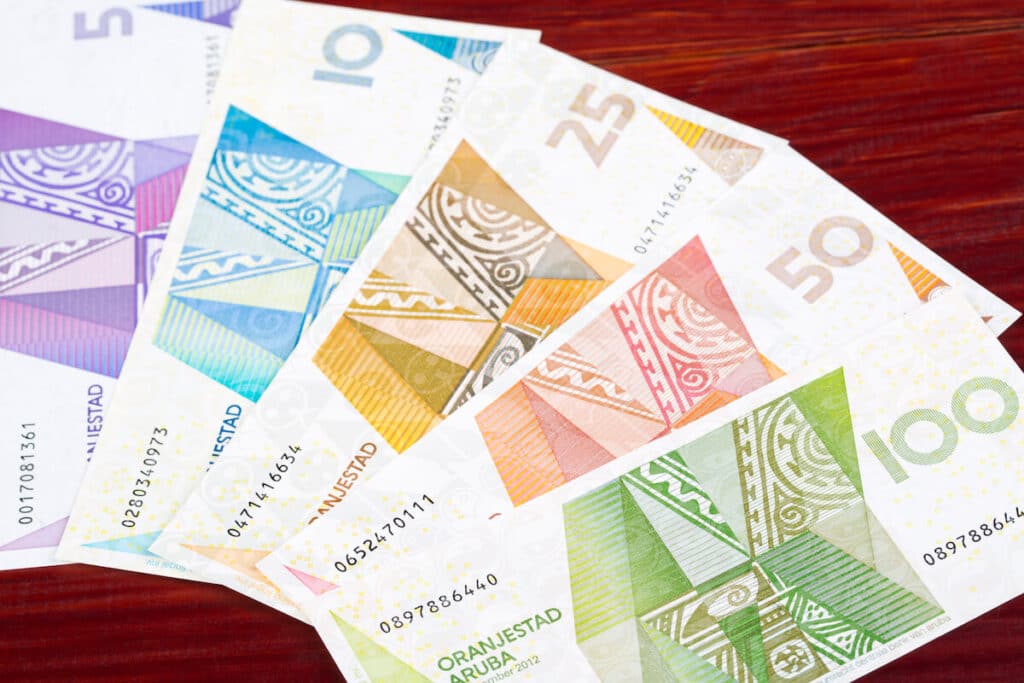If you want to visit Aruba or send money there, you need to know about the Aruban florin (AWG). As of 2025, the florin is still linked to the U.S. dollar. This makes things steady and simple for people traveling or living on the island.
Overview of the Aruban Florin
The Aruban florin became the new money in Aruba in 1986. It took the place of the Netherlands Antillean guilder. This change happened when Aruba got the right to run its own local matters while still being part of the Kingdom of the Netherlands. The florin is split into 100 smaller units called cents. The Centrale Bank van Aruba makes and gives out this money.
Banknotes and Coins
Aruban florin banknotes are easy to spot because they have bright colors and show local animals and special cultural symbols. These banknotes come in different values such as:
- 10 florin
- 25 florin
- 50 florin
- 100 florin
- 200 florin
Coins in circulation are:
- 5 cents
- 10 cents
- 25 cents
- 50 cents (square-shaped, people call it “yotin”)
- 1 florin
- 5 florin
Exchange Rate and Usage
The Aruban florin is tied to the U.S. dollar. The set rate is 1 USD to 1.79 AWG. But sometimes, exchange rates change a little. This can depend on where you are or the type of transaction you make. People on the island take U.S. dollars almost everywhere. Still, you might find it good to use the local currency for small buys.
Historical Context
Aruba’s money shows its Dutch roots and the way the island is self-governed. The name “florin” comes from the Dutch word “gulden.” You can see the island’s special culture and the different plants and animals in the way the money looks.
Practical Tips
- You can find ATMs at many places, and they give out both florins and U.S. dollars.
- Credit cards work in a lot of spots, but you should have some cash with you for small shops and tips.
- Watch out for possible fees if you change your money at hotels or airports.
FAQs about the Aruban Florin
Yes, you can use U.S. dollars in Aruba. The people there take U.S. dollars at most places. But, when you pay with U.S. dollars, you might get your change back in florins.
The best way to exchange money in Aruba is to use ATMs or local banks. These usually give you better rates than hotels or currency exchange booths.
3. Are there any special features of Aruban coins?
Yes, the 50-cent coin stands out because it is square in shape. People often call it “yotin.”
4. Is the Aruban florin accepted outside of Aruba?
No, the florin can only be used in Aruba. You cannot use it in other places. This money is made just for Aruba.

